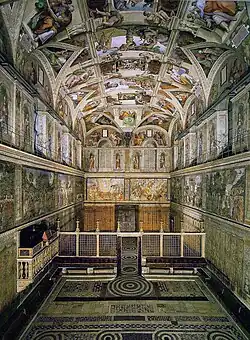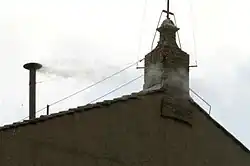Wikijunior:Popes of the Catholic Church/The Conclave

.jpg)
When a pope dies or resigns, a conclave happens to choose the next pope. The word Conclave means "with key" in Latin; a conclave happens behind the locked doors of the Sistine Chapel. The College of Cardinals, made up of church leaders from around the world, meet inside. The cardinals can't leave or use devices until the conclave is over.
In 1059, the College of Cardinals was made to choose popes. Before, popes were chosen by everyday people. In 1274 Pope Gregory X said that cardinals could not leave a conclave until it ends. In 1621, Pope Gregory XV said that a cardinal must get two-thirds of the other cardinals' votes to be pope and that cardinals can't vote for themselves. In 1970, Pope Paul VI said that no cardinal who is at least eighty years old may be in a conclave. In 1996, Pope John Paul II made all cardinals live in the Domus Sanctae Marthae building during a conclave.


Every once in a while during a conclave, smoke comes out of the Sistine Chapel. Black smoke means no pope; white smoke means Habemus papam! (Latin for "We have a pope!") The new pope chooses a new name and is then shown to the world.